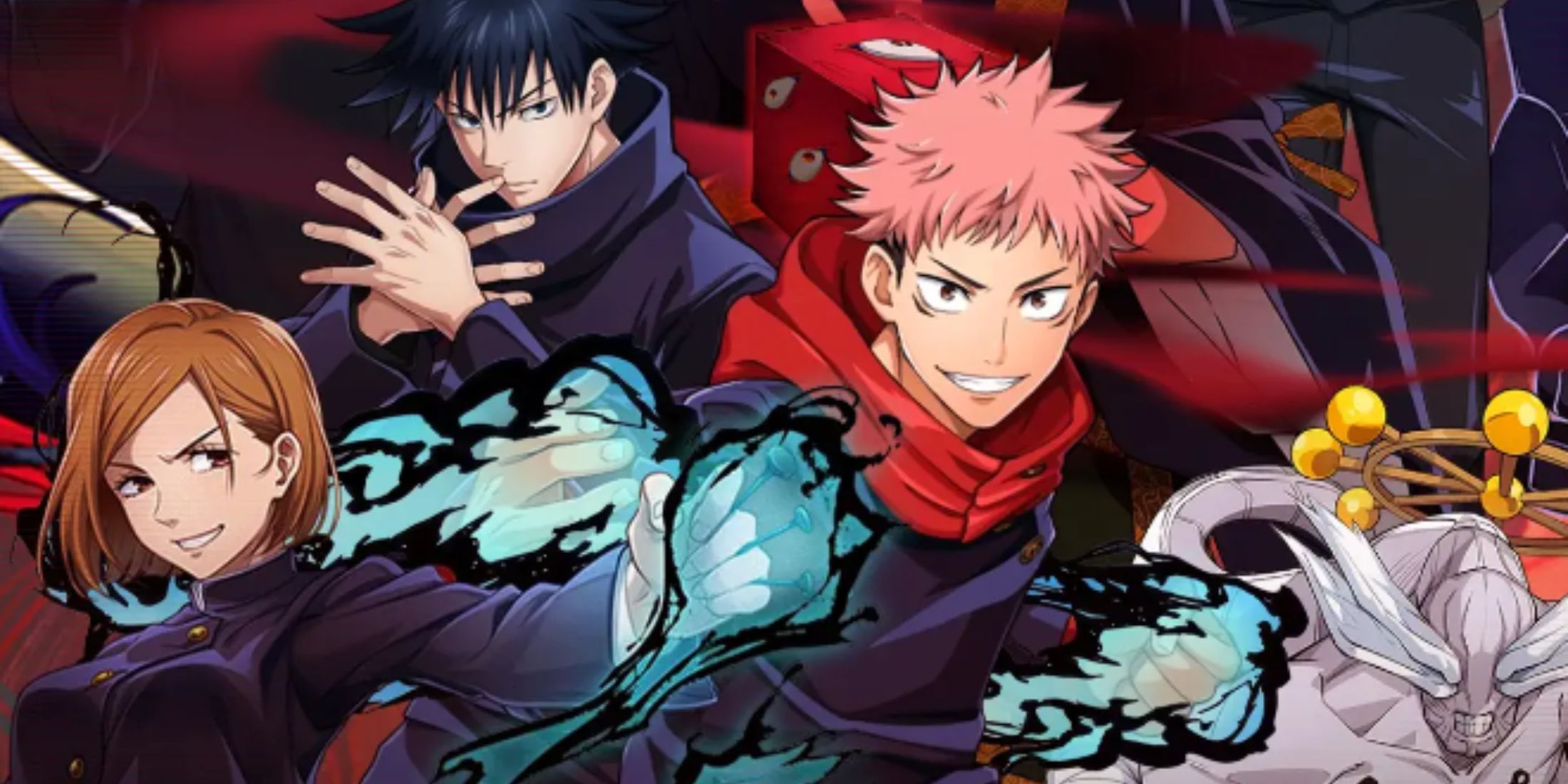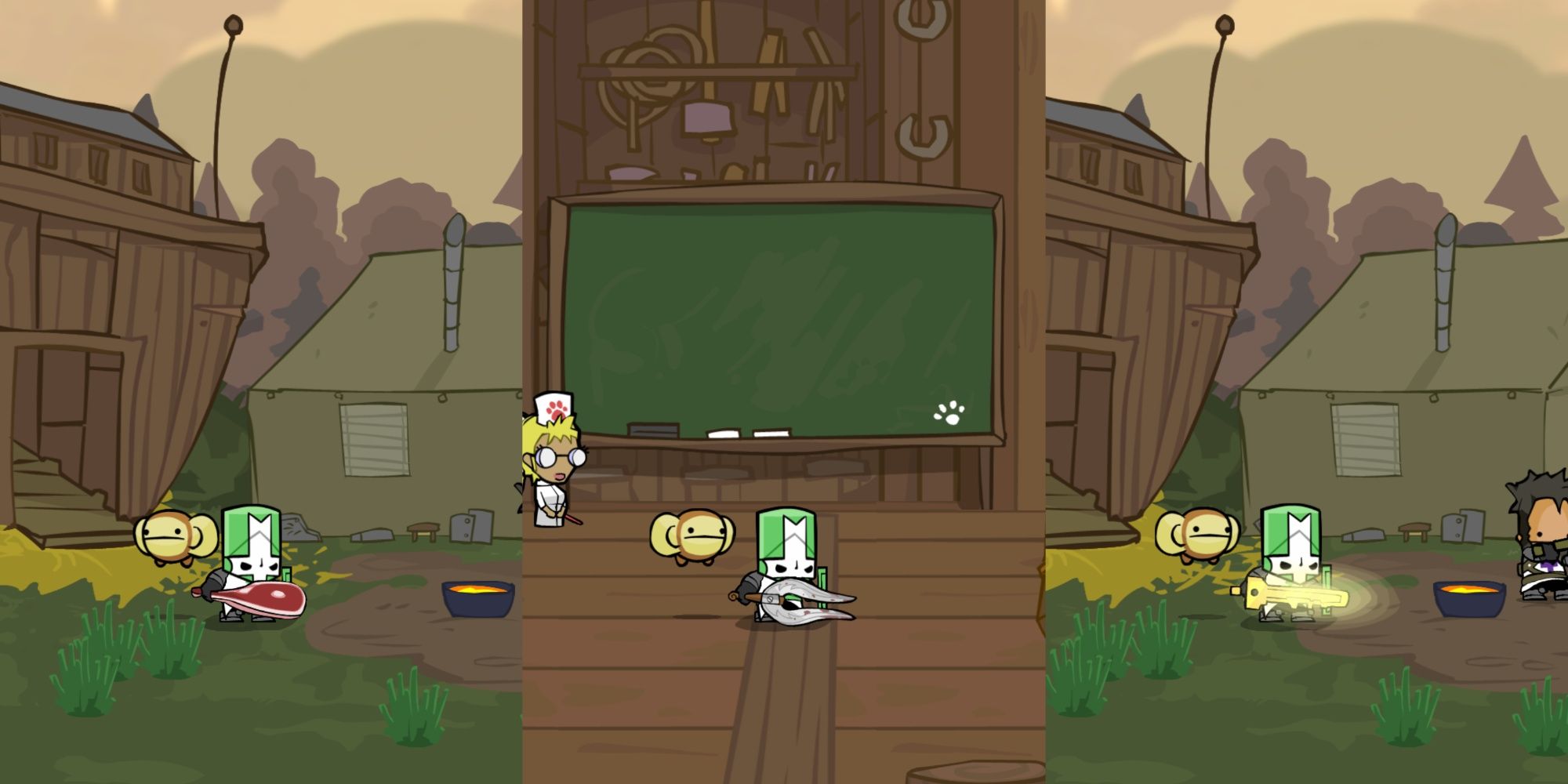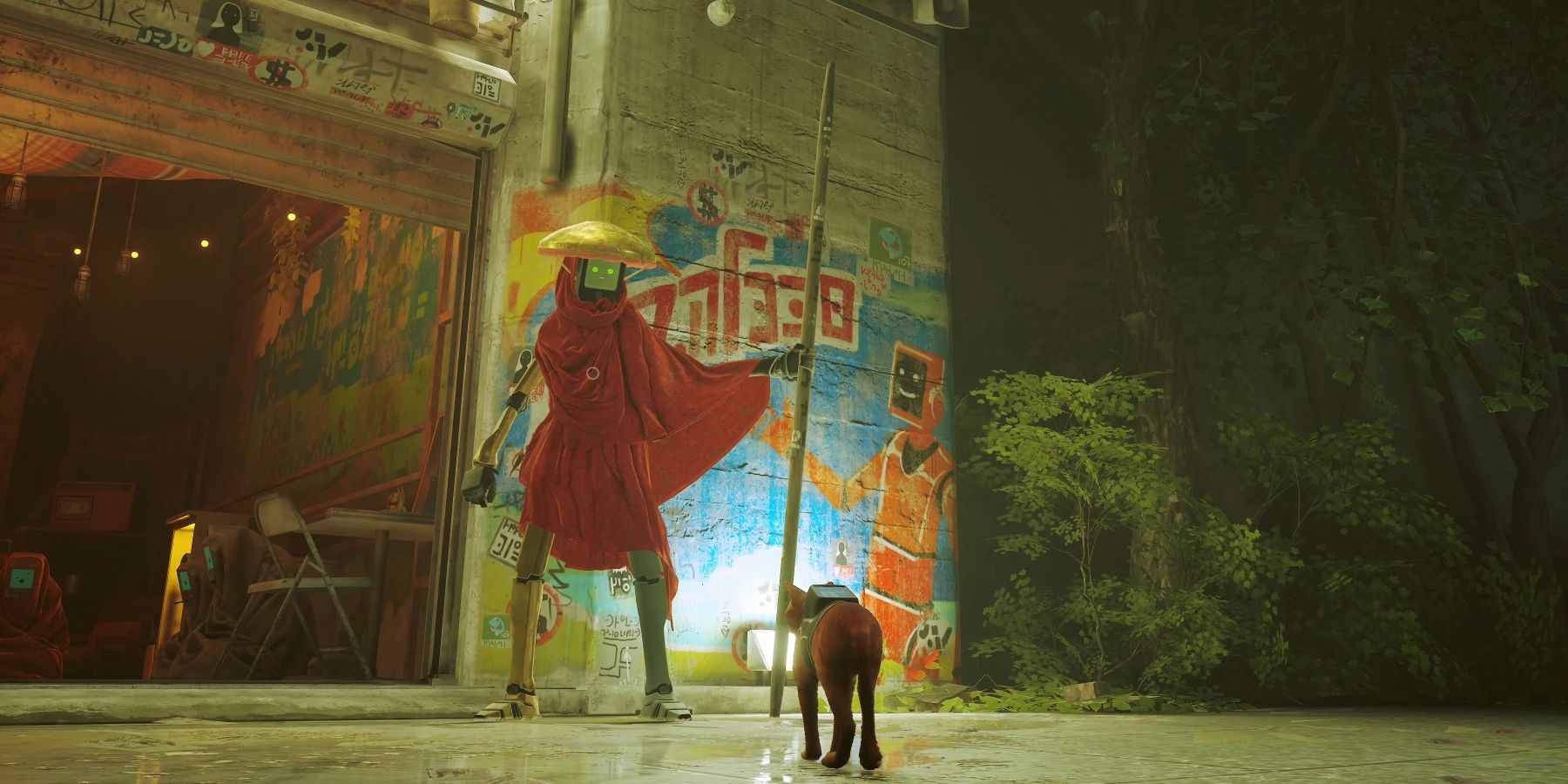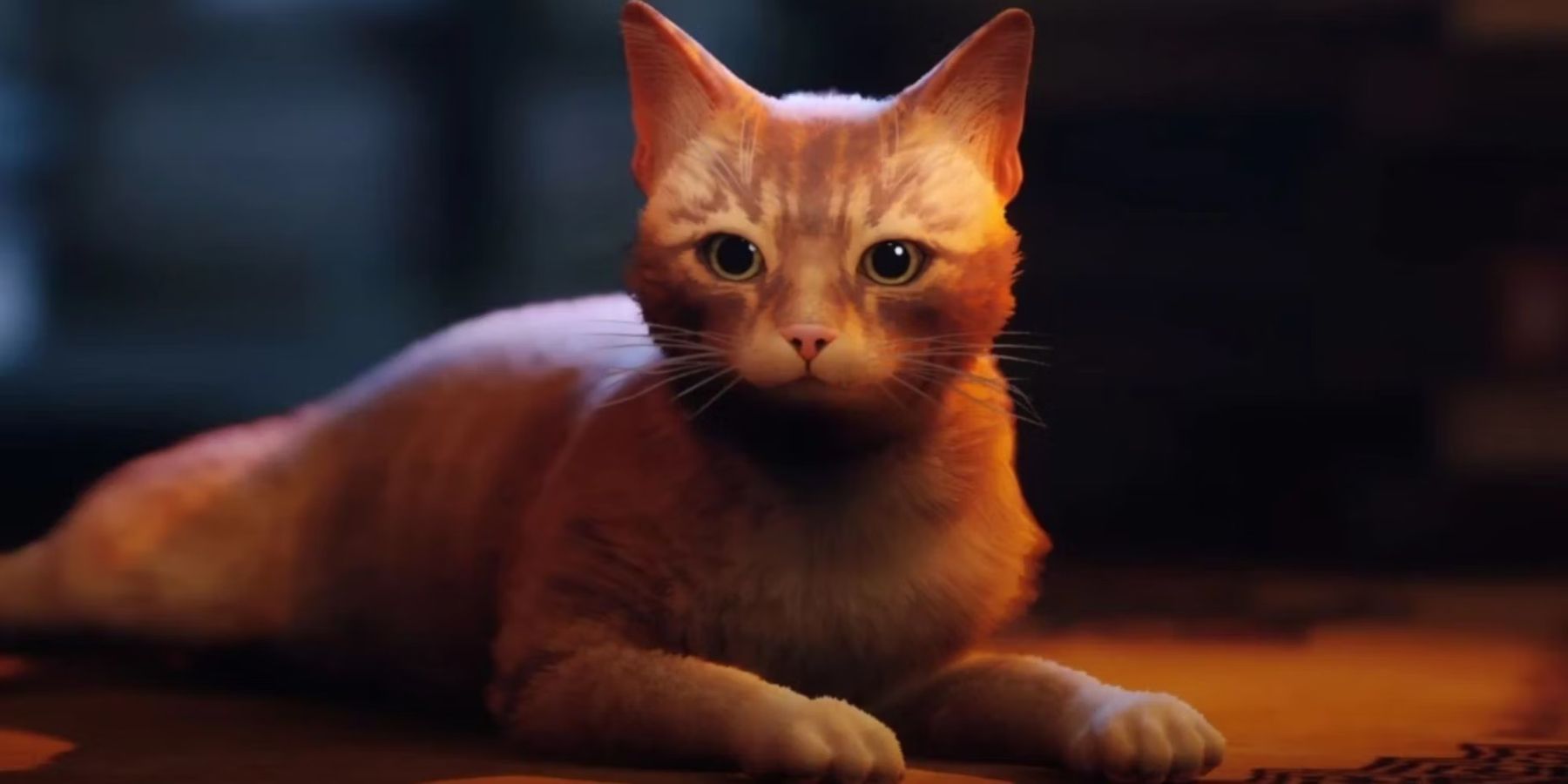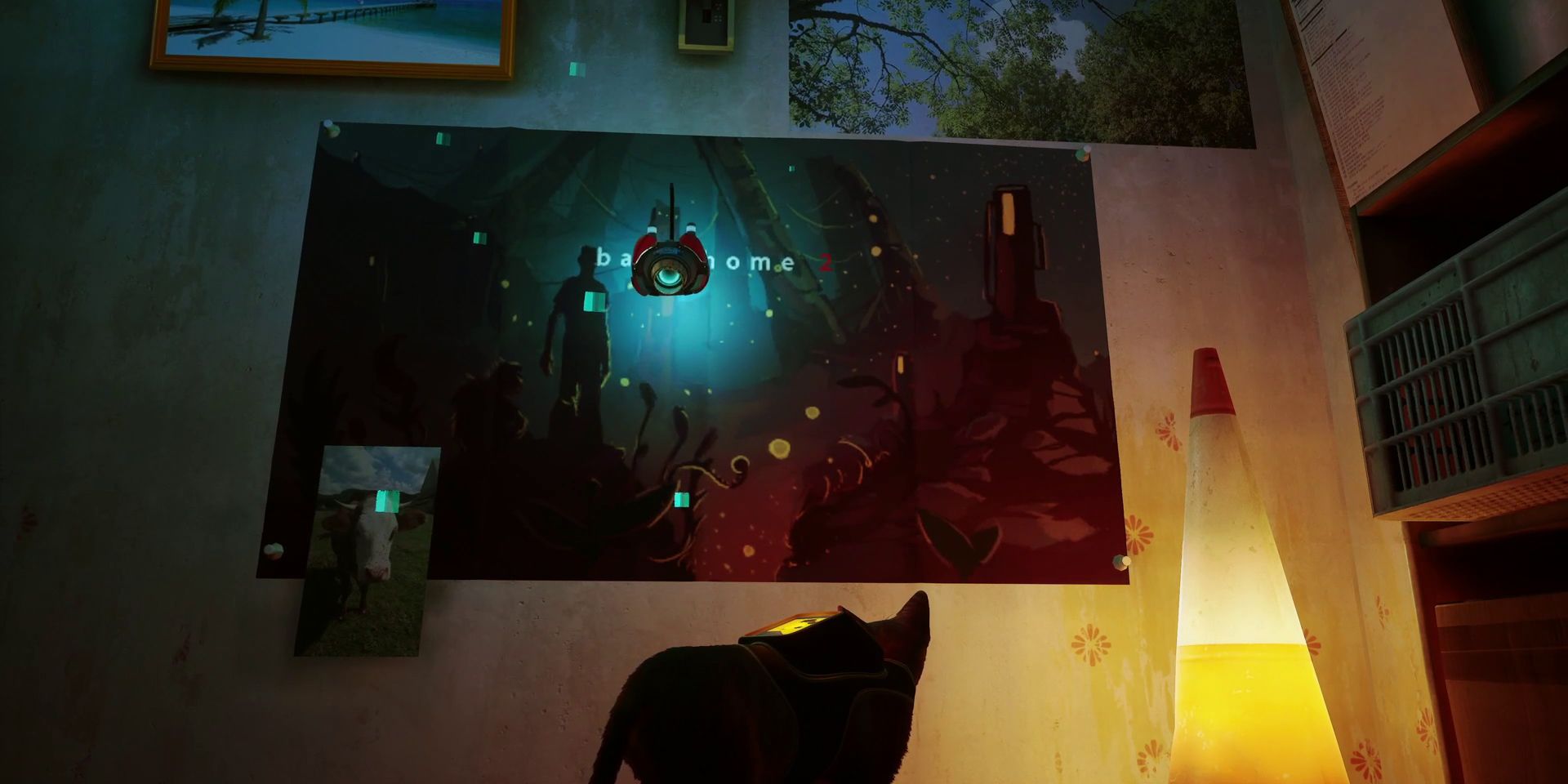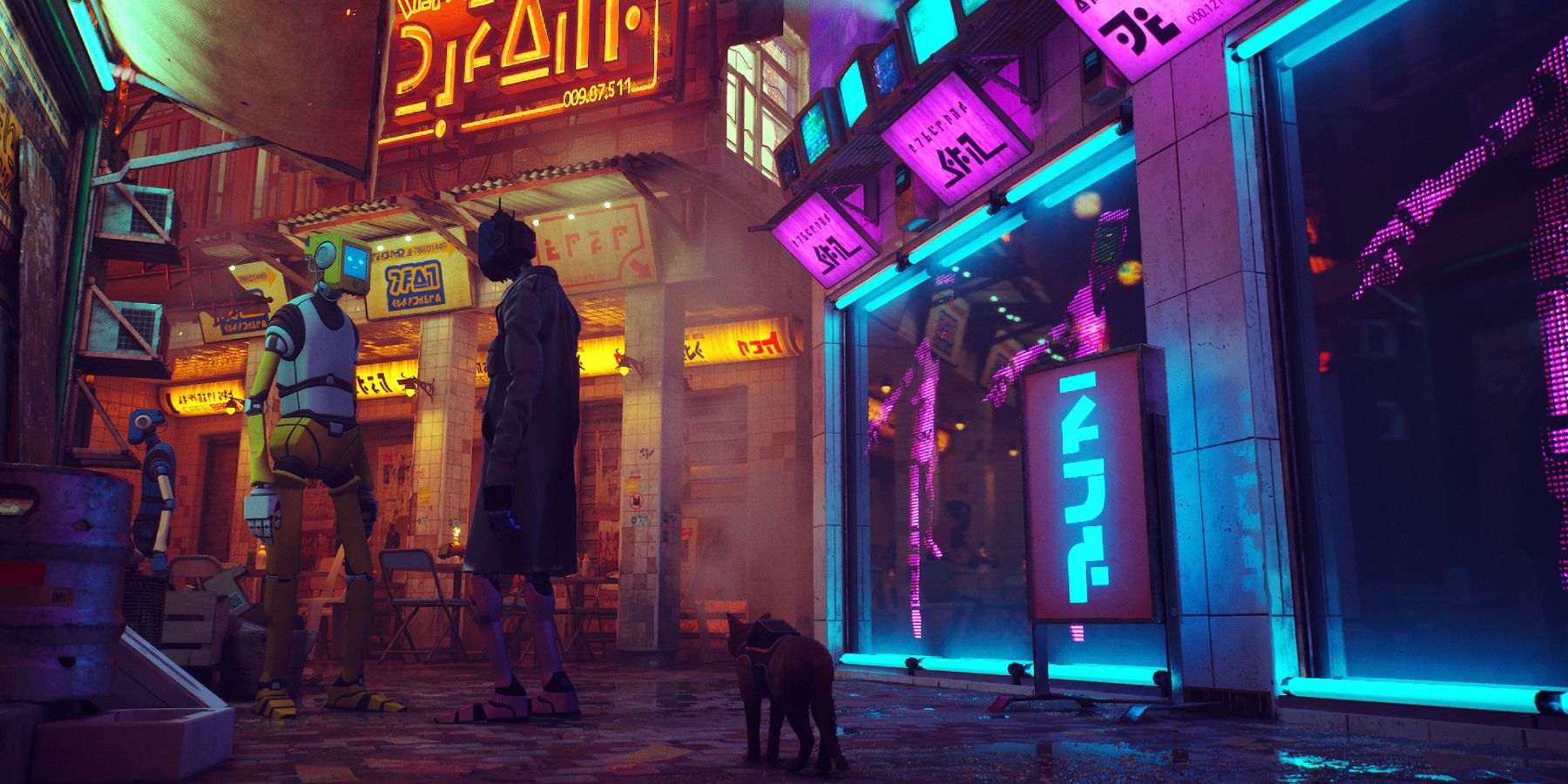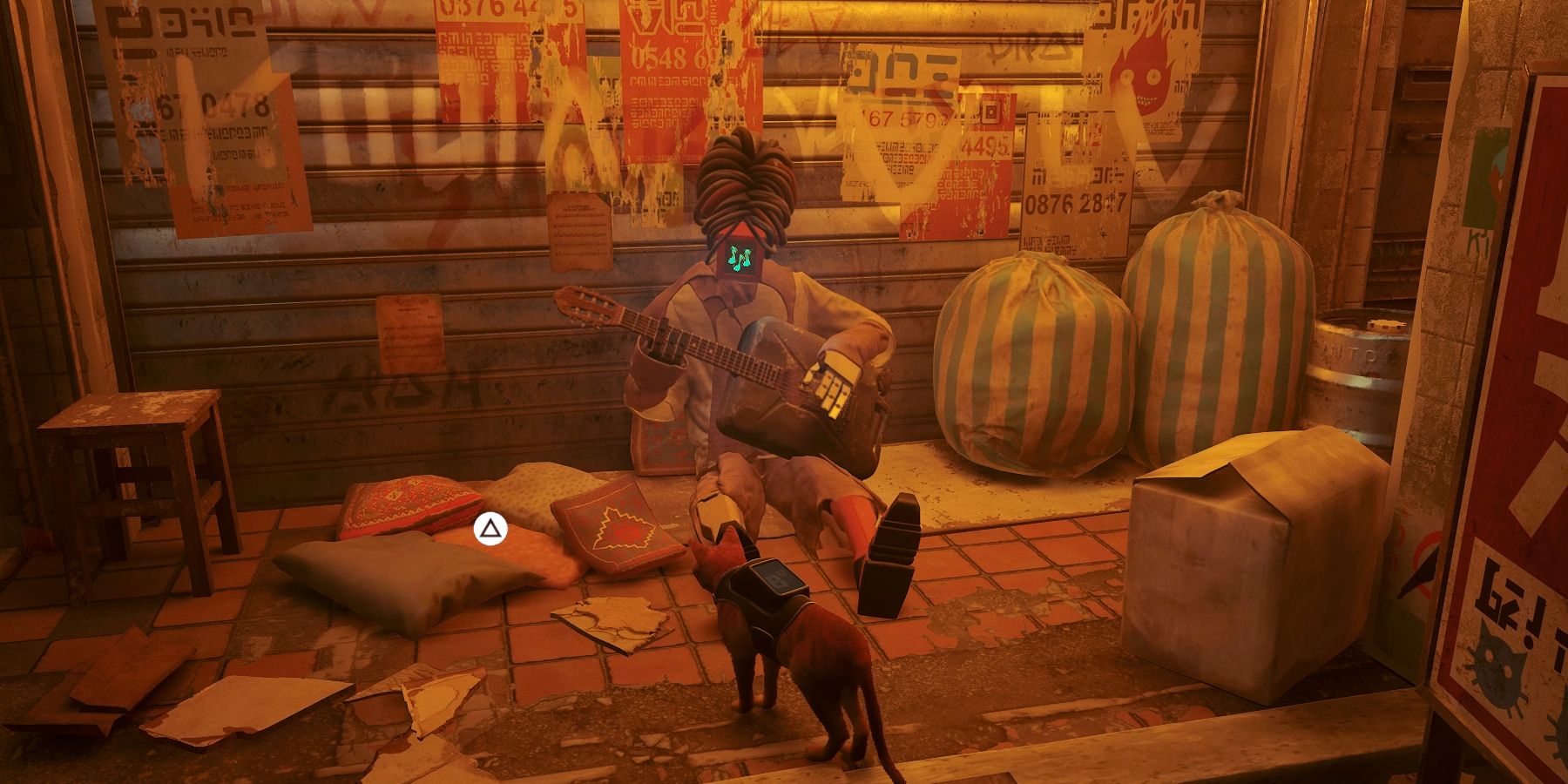Stray has become a gem of a game, earning favorable reviews from critics and fans alike with its straightforward and immersive avatar: a cat. Developed by BlueTwelve Studio and published by Annapurna Interactive, Stray, tells a tale about a cat that falls from the Outside into a Walled City below, where it tries to find a way back to its family. It's a simple story, but it opens the door for an exploration narrative that isn't predictable.
Released in July 2022, Stray is incredibly engaging from its beautiful art and colorful graphics, but its steep immersion into what it's like playing as a cat sets it apart. What cleverly unfolds is a narrative that many can sympathize with, one that crosses the species of humans and cats and lets us see the world from a different point of view. Yet, underneath a cat's fun and silliness lies a charming, light-hearted story balanced with a dark one.
A Charming Cat Avatar
Creating a cat protagonist to explore spaces from very open roads to holes in the wall or fence is a unique approach to a game. Pitching the idea on paper brings a fresh perspective, but it may fall apart if it can't be created accurately. Luckily, Stray succeeds on nearly all fronts. Entertainingly referred to as the cat game before release, Stray allows players to get as serious or as playful as they want, with a dedicated meow button, the ability to scratch rugs, couches, walls, and curtains, or jump from dumpsters to window AC units to rooftops. And this truly brings the game to life in a fun, light-hearted way.
It doesn't ask or require much from the player in terms of leveling up or combat. It just asks that you explore the beautiful world around you through the eyes of a cat and interact with said world as a cat would. Yet, through that exploration, Stray's darker elements reveal a tragic story of what happened to humanity and its successors. Stray can hit the emotional punch through these discoveries, but using a charming avatar keeps the players grounded and able to balance the narrative.
B12's Memories in Stray
As players progress through the different chapters with B12, their droid companion, memories unlock that help paint the city's and humanity's history. This apparatus is perfect for balancing the harsh, emotional beats with the light-hearted ones. The fact that some memories start calmer also mirrors the narrative pace of the game regarding the lighter and darker elements. Their short length also works, as it prevents the over-saturation of darker elements but provides enough context to understand the broader initiatives.
Further along the main narrative, more of the darker features of humanity's past emerge, which are tied to the surviving robotic inhabitants of the walled city. What starts as charming in how they mimic our culture and behaviors soon is underlaid with a sense of tragedy as players realize the humans are gone entirely. While other Stray memories require off-road exploration, players can consume a balanced approach to the world's history at their own pace.
Robotic Behaviors and Culture
After a calm but tense intro as the cat protagonist falls into the walled city and arrives at Stray's Slums, players soon discover that robotic denizens inhabit this common area. These citizens are incredibly well conceived, expressing simplicity and complexity simultaneously, even though they lack advanced features. In this portion of the main narrative, players learn about their purpose, characteristics, behaviors, and culture, while seeing how close to humanity they are.
Humanity's disappearance in Stray shows how the game can balance the lighter and darker elements of its narrative. The fact that the robots are not homicidal, have superiority complexes, or are responsible for humanity's destruction is a fresh take that lightens the tone. It allows creative and expressive ways to show how robotic counterparts aren't always sinister tools of destruction.
Exploration Narrative, Realism, and Soundtrack
The framework of Stray's exploration narrative deftly intertwines with the cat's purpose with B12's, who is invested in regaining their memories. The sense of realism helps keep the trajectory focused, exploring the different methodologies the cat can operate through ordinarily. What also makes the game's balance interesting is that the cat protagonist is an ordinary cat, not an enhanced, mutated, alien one.
That balance of realism, combined with the art for assets, environments, and characters, allows Stray to widen the branches of its exploration. Even obtaining B12 is done in a way that requires just a minor suspension of belief. Combined with the lack of a quest log and a map, the game asks the player to think outside the box.
As players immerse themselves into a cat's world and explore Stray's walled city for freedom, they are also invited to the soundtrack the game features. Its music has no lyrics but evokes many emotions: relief, happiness, charm, tension, fear, grief, and hope. Each piece is almost designed around these facets in a balancing act that provides a new rollercoaster for fans.
BlueTwelve Studios' Stray is an exciting game that initially has what may seem to be a simple story of going home framed through an exploration narrative. At its heart, however, the game unfolds a story full of light and dark-hearted moments, weaving a tale of hope and tragedy, charm and grief. Through its use of a cat, the memory system through B12, and the robotic characters who respect their ancestors, Stray crafts a vividly nuanced tale.
Stray is available on PC, PS4, and PS5.

